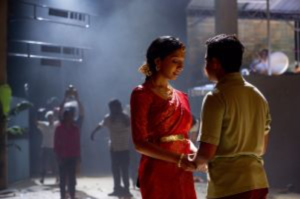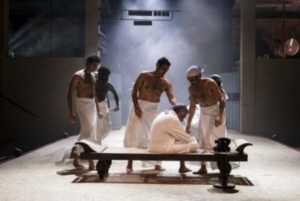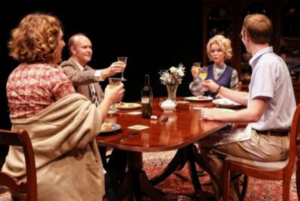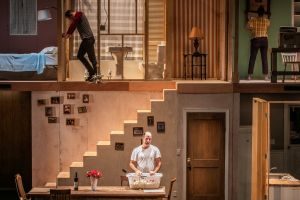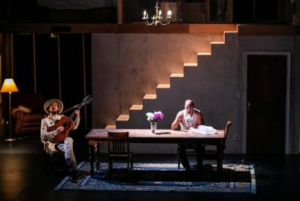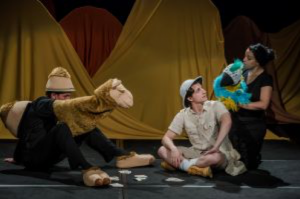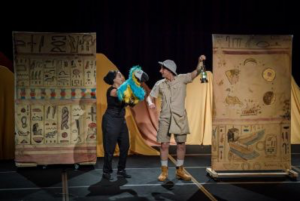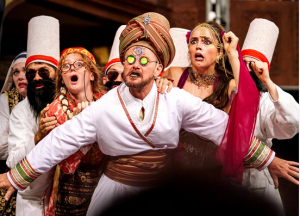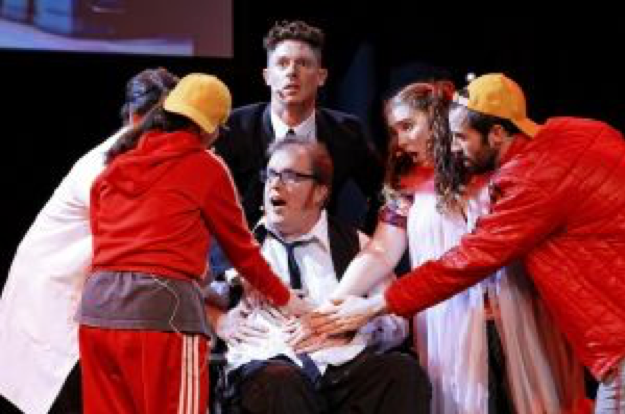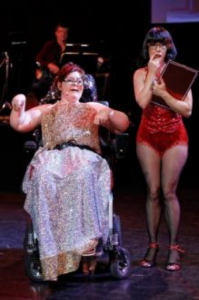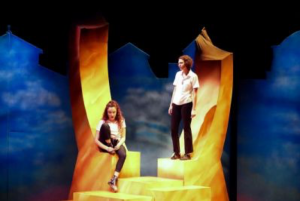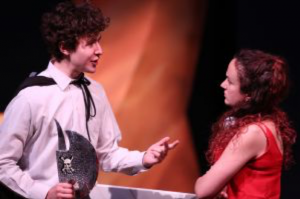Kim Carpenter’s Theatre of Image. Sydney Festival. Riverside Theatres Parramatta. January 18 – 27, 2019.
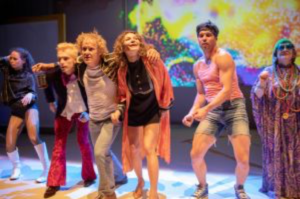
Using music, dance, projections and snatches of dialogue, Kim Carpenter’s Theatre of Image emphasises the visuality of theatre as it explores one of the most famous and vibrant Australian art stories. Brett Whiteley and Wendy Julius met and fell in love as teenagers at a time when social and artistic boundaries were being challenged and broken. Together they embraced a new era of excitement and risk-taking … in life and art.
Images of Whiteley’s work inform the production and the story: bird’s eggs; the swiftly drawn lines of the birds themselves; the 18-part installation American Dream American Nightmare; glimpses of the iconic blue of the Lavender Bay paintings. Interior with Time Past is recreated in one scene, complete with the original vase and filled with bright orange blooms.
Based on a raft of research and conversations, Carpenter reveals brief images of Whiteley as curious child, mischievous brother, lover, husband, father … an artist that made an impact on the world and was lost too soon through an addiction that he found too hard to conquer.
The production is short – just over an hour – and disappointingly short on depth and detail. Characters flit in and out, sometimes momentarily, sometimes unnecessarily, belying “the love story bound by art” that the title promises. Characters tease us with glimpses of narrative that are whipped away too quickly.
With such a talented cast of performers and creatives, it is sad that this legendary story is reduced to such fragmented images.
Whiteley is portrayed by dancer Dean Elliott and actor Paul Gleeson, who together suggest the curiosity, intelligent wonder and innate creativity that drove the man and the artist. Both performers are lithe and agile, moving in and out of moments with the nimbleness that expresses the mercurial complexity of his character.
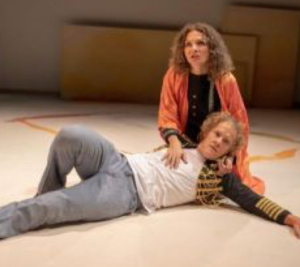
Leeanna Walsman does not disappoint in her portrayal of Wendy Whiteley. With sinuous movement and mellow voice, Walsman finds the intricacy of a woman who could love, inspire and empathise, offer wisdom and strength, but eventually and reluctantly admit the need to stop and walk away.
Jeanette Cronin captures the naïve sibling admiration of Whiteley’s sister Frannie Hopkirk. Olivia Brown plays their mother. Tony Llewellyn-Jones plays their father and the artist Lloyd Rees who was so influential in Whiteley’s life. Yasmin Polley appears in brief moments as a young Arkie Whitely.
Dancers Elliot, Robbie Curtis and Naomi Hibberd weave through and around the actors in graceful choreography designed by Lucas Jennings to link segments and imply added dimensions of the characters.
Despite all of this, the images of the Whiteleys and the way that Carpenter has chosen to portray them, tells their story too ephemerally and ends it too abruptly.
First published in Stage Whispers magazine.
